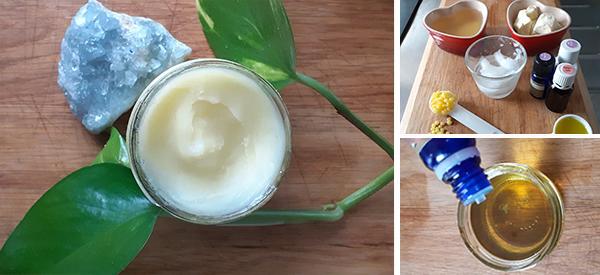
Organic Homemade Ultra-Moisturizing Cream For Face and Body
In this article, I will take a close look at the ingredients needed to make an ultra-moisturizing cream, suitable for both the face and the body. The recipe features all my favorite oils.
I have used them all either on their own or in various combinations. I have suffered from dry skin since I was a child. I am always experimenting with oils and essential oils to treat my dry skin.
The intention is that this article will give you step-by-step, easy-to-follow instructions to make a cream that both hydrates and nourishes your skin.
The Skin
The fact that skin is the largest organ of our body is often overlooked and not known by many. Our skin dries due to external and internal environments and conditions. We need to hydrate our bodies internally with water and externally with moisturizers and oils. Skin that needs hydrating feels dry, tight, and sore. In more extreme cases the skin can be chapped, cracked, and aged with wrinkles. Harsh climates, detergents, and city water are contributing factors.
Essential oils
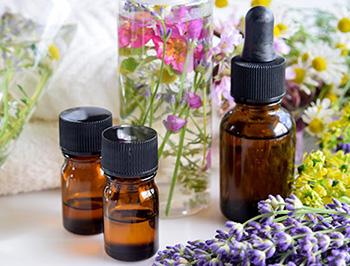
The great thing about using essential oils as ingredients in any homemade cosmetic recipe is that they have multiple uses and actions. I have chosen to use Lavender in this recipe, for its ability to counteract and moisturize dry skin.
- Lavender. Lavandula augustifolia The healing properties of lavender essential oil are almost endless. Lavender can do no wrong. Known to balance the body and work wherever there is a need.
- Geranium. Pelargonium graveolens. Geranium is an active ingredient in this recipe because it can help to alleviate dry and aging skin. As well as having antidepressant actions can help low libido and soothe the nervous system.
Oils
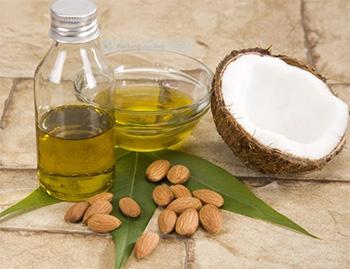
- Olive oil. Olea europaea. The whole tree has herbal and nutritional value. It is a valuable resource. The leaves can make herbal tinctures, we eat the fruit, and make oil from it. Olive tree bark is made into a decoction. Organic extra virgin Olive oil is the most preferable. Personally, I found olive oil to be very nourishing when used as a skin moisturizer.
- Coconut oil. Cocos nucifera. From the well-known fruit of the species of palm. The kernel contains 70 percent of a fixed oil called Coconut oil or Coconut butter. Organic Virgin cold-pressed coconut oil is the best. A good base in hair and skin products.
- Almond oil. Prunus dulcis is an oil made from almond seeds. Almond oil soothes and softens skin. Good base oil for aromatherapy and skincare products.
Other Ingredients
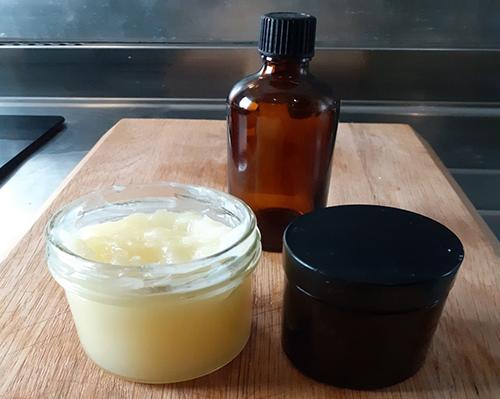
- Beeswax. Cera alba is a natural wax produced by honeybees. Beeswax is an ingredient used in painting, candle-making, furnish polish, and cosmetics. Beeswax is a humectant which means it adds moisture to whatever substance it is added to. Beeswax hydrates and protects the skin and has exfoliating properties.
- Cocoa Butter. Cocoa butter is fat from cocoa beans. I have used cocoa butter and enjoyed its benefits for years. It is high in fatty acid. Hydrates and nourishes the skin. It can improve elasticity and protects the skin from harmful UV sun rays. The fat in cocoa butter forms a protective barrier over the skin to hold in moisture.
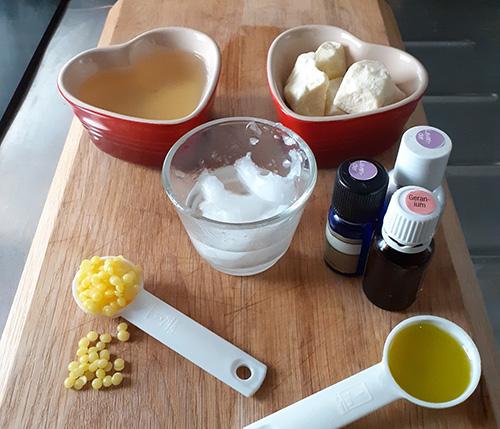
Ultra-Hydrating Skin Cream Recipe
- 1/4 cup of almond oil
- 2 tbs of coconut oil
- 1 tbs of olive oil
- 1 tbs of beeswax
- 1/2 tbs of cocoa butter
- 10-15 drops of lavender essential oil
- 10-15 drops of geranium essential oil
Step 1
Place a pan half-filled with water on the stove. Bring to the boil then turn the heat down to a simmer.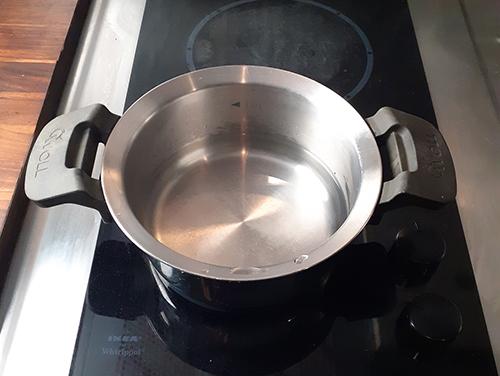
Step 2
Place bowl on top of the pan. This acts as a double boiler and prevents us from overheating the oil. The oils do not need to be cooked. They are being gently warmed so that they melt and can blend easily.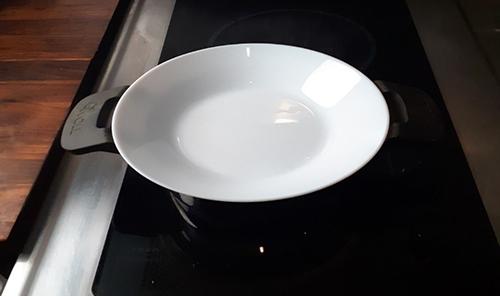
Step 3
I placed a quarter of a cup of almond oil together with a tablespoon of beeswax. I stirred with a small wooden spoon. This process took 2 minutes for the beeswax to melt.
Step 4
Add 1 tablespoon of extra virgin organic olive oil and stir.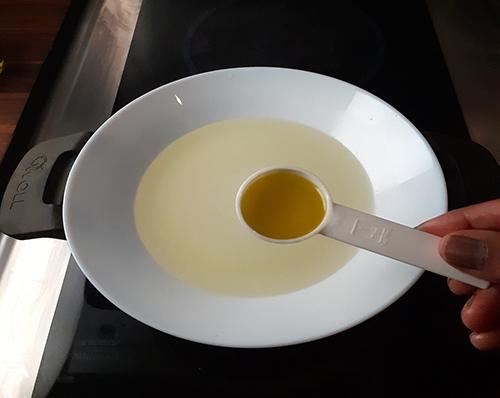
Step 5
Add 1/2 tbs of organic cocoa butter. When melted stir gently.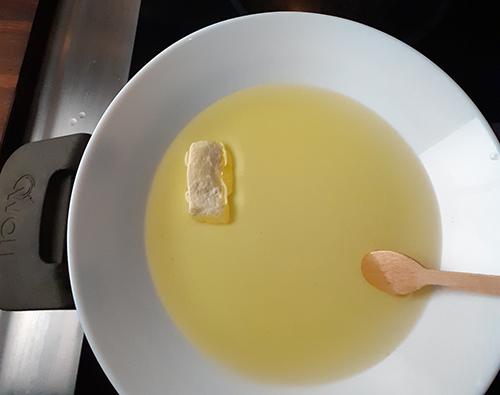
Step 6
Add 2 tablespoons of extra virgin coconut oil. Stir gently.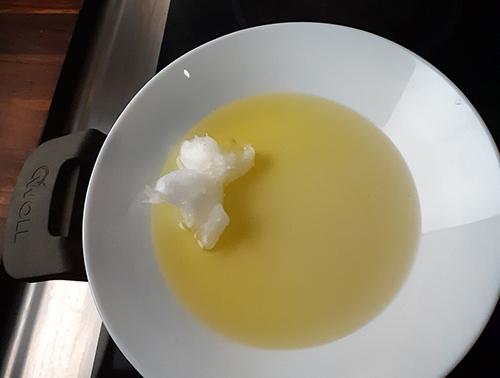
Step 7
Remove bowl with ingredients off the heat. Use a cloth or heat-resistant gloves as the bowl will be hot. Place on the side to cool a little.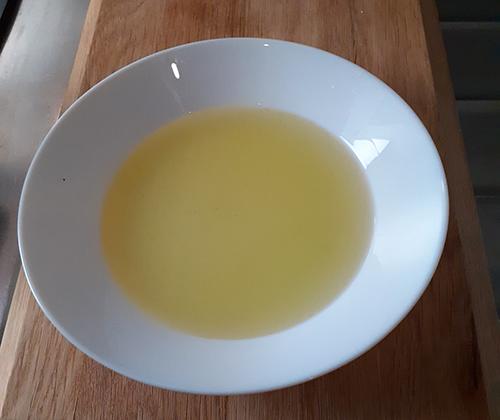
Step 8
Pour blended oils into a sterilized glass jar. Add 10 – 15 drops of lavender oil. I prefer non-organic lavender oil.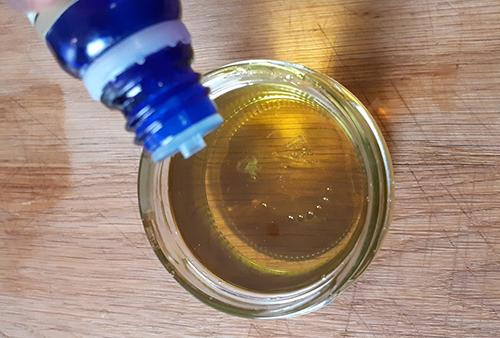
Step 9
Add 10 – 15 drops of geranium oil. I prefer non-organic geranium essential oil.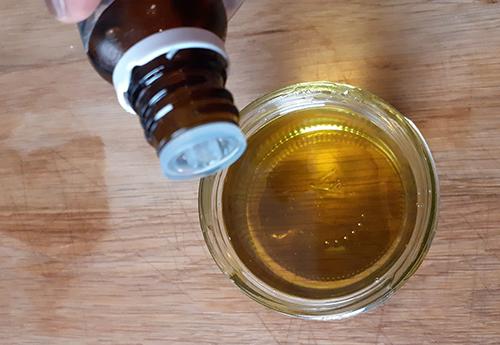
Step 10
Allow the jar and its contents to cool down it will take approximately 30 minutes to solidify into a cream-like substance.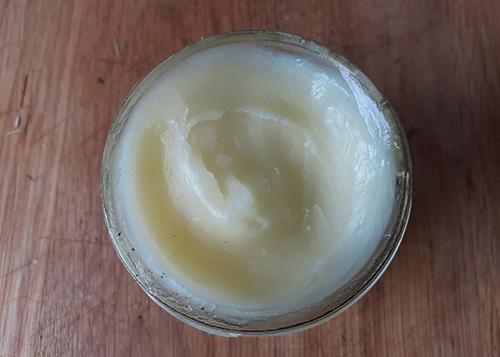
Step 11
Apply cream to face and body. When you look at it in the jar and take a small knob on your finger, it has an oily look. The cream will not leave an oil residue on the surface of the skin. It has a soft texture and absorbs into the skin well.
When using essential oils in cosmetic recipes store them in dark-colored glass jars. Brown and blue preferably. If you do not have brown or blue jars make sure to store them in a dark cool place or in the fridge. I have used a clear glass jar so you can see the product When stored in the fridge this cream maintains its soft texture and is easy to apply to skin. Stored in dark glass jars and kept out of direct sunlight this oil-based moisturizing cream can last up to 2 months. It is so lovely to use I doubt that you will keep that long.
You may also like:
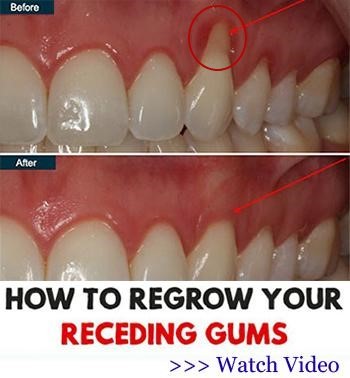 How to Make a Chaparral Salve for Wounds And Skin Infections
How to Make a Chaparral Salve for Wounds And Skin Infections
Similar to Morphine: The Best Natural Painkiller that Grows in Your Backyard (Video)
Garden Homemade Salve for Wrinkles

As an esthetician, I would not add bees wax and coconut oil to a face cream. Both are highly comedogenic which can cause breakouts and rashes.
Hi Coleen,
Thank you so much for your comment.
Your feedback and knowledge are valuable to us.
What would you use in place of those two ingredients?
I would like to know the answer to your question, as well.
I have very dry, sensitive skin and started making a cream similar to this with coconut oil and bees wax. Both my sister and I who have major allergies have had no issues with these ingredients. The cream soaks in beautifully and doesn’t leave an oily residue.
I agree. I work as a clinical herbalist and with natural cosmetics for years, studied biochemistry of plants and I would rather skip bees wax and made of these ingredients an oil and use it for the night. Coconut oil can dry the skin, I would use argan oil instead. If we really want a light cream which is not closing pores, better use water fase in it (for example infusion of lavender, marigold, camomile etc) and combine both fases with cethyl alcohol (emulsifier which helps to hydrate the skin and we add it to the oil fase). Another trick to hydrate more is a bit of glycerine (or herbal glycerite) and a little of castor oil. I dont use oils as they go-I always prepare macerate of the plant I wish to make cream from. Hope it helps, cheers girls!
Great recipe! I have all these ingredients on hand and plan to make this up today. Perfect timing as I really need a natural solution for my winter dry skin.
Hi Danielle,
I am glad to hear that you already have all the ingredients on hand.
Tell us if the cream works well for you 🙂
Hi, is it 1/2 Tbsp od the cocoa butter? It doesn’t specify in the ingredient list
Hi Ania,
We apologize for the confusion.
The recipe requires 1/2 tbs of cocoa butter.
May I use something other than almond oil?
Hi Renee,
Thank you for your comment.
You may try any of the following oils:
Canola Oil: Like Almond oil, canola oil also is a liquid oil at room temperature, which is non-sticky. Suitable for both oily and dry skin types, canola oil can be flexibly used for both hydrating and revitalizing your skin.
Argan Oil can help reduce fine lines and wrinkles by restoring the skin’s hydro-lipid layer. Moreover, it also has a tightening effect on the skin, making it a fantastic almond oil substitute for the face.
Jojoba Oil substitute is very lightweight. It comes with healing and moisturizing benefits for all skin types.
Grapeseed oil contains vitamin E—an ingredient commonly found in expensive eye creams that reduces inflammation— as well as moisturizing fatty acids, it may help skin appear tighter and more youthful.
God bless!
Great supplemental comments regarding all other oils! Thank you!
Better to pick other than canola oil!! Canola is a RBD oil(REFINED,BLEACHED, and DEODORIZED!!) Would not use for cooking either!!
In the recipe you do not give the unit of measure for the cocoa butter.
The write up says 5 grams of cocoa butter that equates to 0.175 oz., cocoa butter weighs 0.16 oz. per teaspoon, so use a heavy teaspoon or weigh in out exactly 0.175oz.?
Hi Bob,
We apologize for the confusion.
The recipe requires 1/2 tbs of cocoa butter.
We already made the appropriate changes.
God bless!
Thank you! I’ve been wanting a recipe for this. I know you use cotton wood & calendula for yourself. Would you share that recipe?
Hi Beverly,
Thank you for your interest in our work.
I am glad to hear you like this recipe.
I’m definitely taking your suggestion into consideration. We will soon have an article about cottonwood and calendula. Stay tuned! 😀
Why do you prefer non-organic essential oils?
Hi Trina,
For me, it’s about the smell when I hold the bottle to my nose the feeling I get or the energy I get from the oil. I am not suggesting that people who prefer organic oils go to non-organic it is just something I do and it is my personal preference sometimes. Hope that makes sense. (Ruth – author of this article)
Thank you for this! Can you sub shea butter for cocoa butter? (I have some at home already).
Hi Kate,
Yes, shea butter is a good substitute. Both shea butter and cocoa butter are rich & moisturizing.
In addition to the moisturizing benefits of the fatty acids, shea butter also contains vitamins that may help repair damaged skin. Among its many benefits, shea butter may help: reduce skin redness from sunburn and boost collagen production in the skin.
The recipe says 1/2 cocoa butter. 1/2 of what? A table spoon?
Hi Jamie,
We apologize for the confusion.
The recipe requires 1/2 tbs of cocoa butter.
for ppl with nut allergies?
Can you clarify the measurement for the cocoa butter please.
Hi Bonnie,
We apologize for the confusion.
The recipe requires 1/2 tbs of cocoa butter.
What can be substituted for the beeswax.? I am highly allergic to both beeswax and carnauba wax. Thanks.
Hi Kakl,
I’m sorry to hear about your allergy.
You can try :
Candelilla Wax: has the same lubricating properties as beeswax but is harder and much less pliable. Use half the amount called for when substituting for beeswax. Same price as beeswax but you’ll use half the amount.
or
Soy wax: has the same hardness as beeswax so it can be used in equal amounts in recipes.
Stay safe!
Adding Vitamin E makes this an excellent scar treatment or to minimize stretch marks!
I am allergic to coconut. What can I substitute for it?
Hello The List Herbs,
I like the article and I love the book I purchased last year. I have a question unrelated to the article. I make a hot oil treatment for my extremely dry hair and I like it; however, I would probably benefit more from it if I could turn it into a hair mask. After I wash and towel dry my hair I add my hot oil treatment, trying not to over saturate my hair with the oil.
My dilemma is it will run down my face, neck, shoulders, and back before the 30 to 60 minutes has ended. Even though those area are soft and smooth to the touch my hair is not as soft as I would like for it to be. I believe that is due to more of it running down, and it doesn’t matter if I use or do not use a plastic cap.
How do I turn the hot oil treatment into a mask? Is it possible to use one of these wax or butters (Beez/Candelilla/Soy wax or Shea/Cocoa butter) that was mention in the article or from your reply to a comment? What is your professional opinion and recommendations to this dilemma? The ingredients used in the hot oil treatment is below!
Kind regards,
Regina
Hot Oil Treatment
1.5-2 oz Grapeseed Oil
1.5-2 oz Extra Virgin Olive Oil
1-2 oz of either 100% unrefined Coconut Oil OR Pure Organic Coconut Oil
1 oz Avocado Oil
1 oz Jojoba Oil
1 oz Sweet Almond Oil
0.5-1 oz Castor Oil
0.5-1 oz Mineral Oil
0.5 oz Moroccan Argan Oil
0.5 oz Vitamin E Oil
0.5 oz Tea Tree Oil
10-15 drops of Ylang Ylang Essential Oil
I adjust the ounces to fit which ever size bottle I’m using for the hot oil treatment.
Hi Regina,
Thank you for your comment.
Some of these oils solidify when cold. Maybe if you use a little more coconut oil and then stick it in the fridge it might get thicker and solidify. You could add the oil ingredients to cocoa butter or shea butter and keep an eye on it if it gets too hard you won’t be able to apply it to your hair.
Or how about fresh avocado?! Mash it up, add the oils, mix well and put on your hair. Beeswax has a lovely texture but I think cocoa and shea butter are the better options or simply a fresh mushy fruit. Advocado or banana.
I hope this helps!
I appreciate the recommendations, thank you!
Have tried your recipe and love the way it feels on my red headed skin! My sister is adamant about lotions that have the first ingredient as water, won’t use them, so I hope she’s going to like this!
I’m almost done with 5 years of post cancer anti estrogen prescription, it has done a number on my skin and hair, so this will definitely help.
Thanks for sharing.
What other essentials would be good substitutes for lavender oil? Because I feel like I am the only person in the world that can’t stand the smell of it.
I still don’t understand not the organic one, as it is far more proprietary from all points of view.
How does it go form bowl colour to glass jar colour???
Looks near clear in jar
What can I do so it isn’t so greasy?